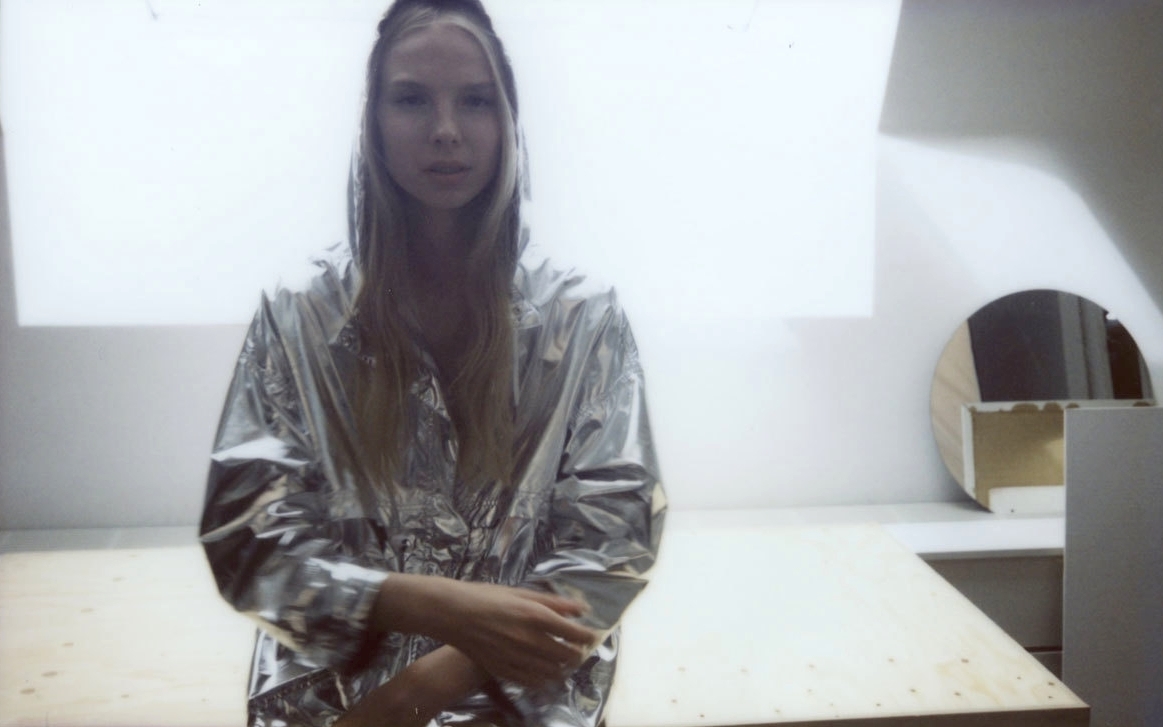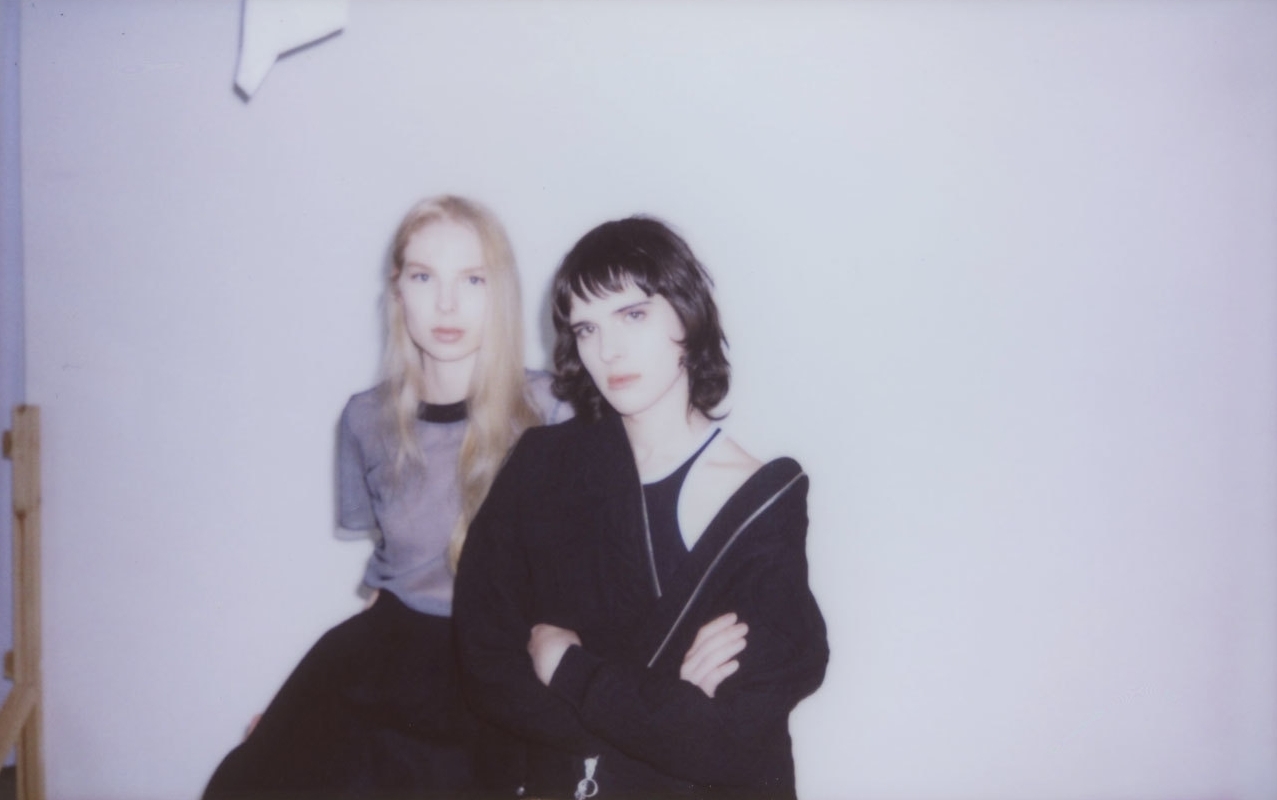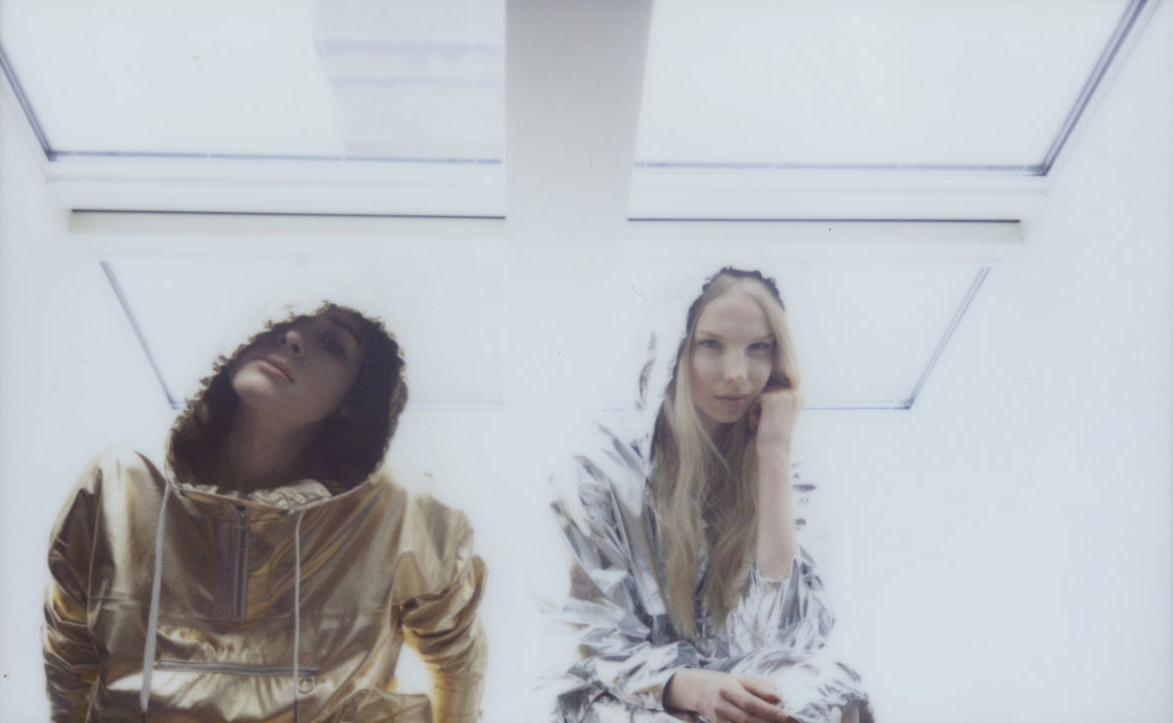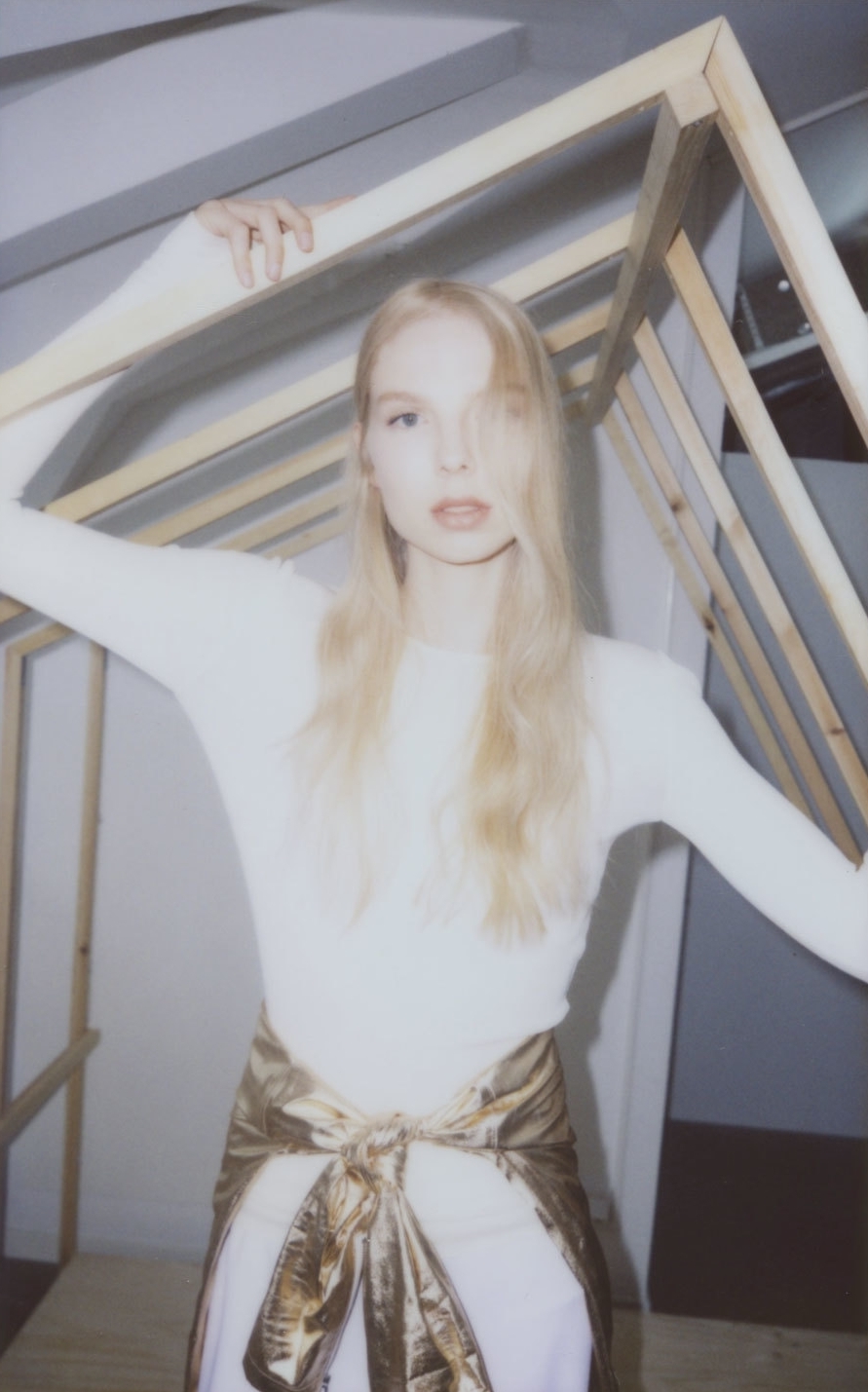Being a teenager is one of the most difficult things you can be. It’s the age where nothing fits, where your body is changing and your hormones are taking control of you. You don’t know who you are or who you’re supposed to be. For model, writer and DJ, Valentijn De Hingh — who spent her coming of age years transitioning from male to female — it was much, much harder. Not only was her entire school aware of her transition, but from ages 7 to 17, she was also being filmed as part of a documentary, which aired in Holland when she turned 18. A year later, Valentijn underwent gender reassignment surgery and moved to Amsterdam to pursue life as a young woman.
Since graduating with a degree in Literary Studies from the University of Amsterdam, Valentijn has found herself catapulted to fame, having been photographed by Bruce Weber for Barneys’ iconic Brothers, Sisters, Sons, Daughters spring/summer 14 campaign, which featured 17 transgender individuals — a powerful product of the monumental strides being made towards transgender rights and visibility.
With trans trailblazers from Caitlyn Jenner and Laverne Cox to Hari Nef and Juliana Huxtable leading the charge, trans issues have become a prominent part of the cultural conversation. So much so, that high street brand & Other Stories entrusted its entire fall/winter 15 campaign to five young transgender creatives, including the lovely Miss De Hingh. We talk to the Dutch beauty about what it means to be a girl, the objectification of the cisgender gaze, and why she’ll never be exploited.
At what age did you decide to transition?
There wasn’t really an age when I started my transition. As a kid, I was never really like other little boys. I played with Barbie dolls, was obsessed with Disney films, and especially identified with female characters. I played mostly with girls and liked to play dress-up. My parents noticed this of course, but never thought anything of it, really. When I was five-years-old, teachers started commenting more and more on how my behavior was not like other boys, and when [my parents] read an article about transgender children in a magazine, and everything sort of fell into place for them. They took me to a child psychologist when I was five and that’s where it all began.
It still took me a long time to fully transition — I took everything step-by-step. For instance: at first I wasn’t allowed to wear dresses to school or grow out my hair. But then, when we would go on vacation, I would go as a girl, to try out how that felt. Later, I grew out my hair and started wearing more girly clothes. The last step for me was changing my pronouns from male to female. I did that when I was about 14. After that, I started hormone replacement therapy at 16, and underwent gender reassignment surgery at 19.
Were you nervous about transitioning?
It felt very natural and I didn’t take any steps before I was ready for them, so I never felt nervous. But transitioning can be a very emotional and difficult process, and it didn’t help that most of my transition took place during my teenage years. Almost everybody at school knew what was going on. It’s hard enough as it is being a teenager, trying to figure out who you are as a person, let alone being uncertain about where you stand on the gender spectrum. Just like any teenager, I was afraid of being labelled as the weirdo — and at times I was — because of my transition. It never occurred to me to quit, however. It felt like I was doing the right thing for myself from the get go.

Did you receive any negative attention?
I was never really bullied, probably because I always was very open about being transgender. For instance, at the beginning of each school year I would discuss being transgender in my new class with a teacher, which created an open atmosphere in which people felt ok about asking questions rather than talking about me behind my back. People from different classes sometimes yelled insults at me though, and I received the occasional shove in between classes. And as I come from a small town, people I had never met would come up to me and ask rude questions or insult me. When I started going out, for example, one time someone came up to me in a bar to tell me that he placed a bet with a friend on whether I was a ‘real’ girl or not. Those things hurt, but I always had people who had my back and who I could talk to. That support was a huge help.
What does gender mean to you?
I’ve always been confused about gender. Ever since I was little, I didn’t understand why it was weird for me to play with dolls just because I was a boy. In a TED talk I gave, I described gender as one big joke that everybody seems to get but me. I guess I still feel that way. Gender to me is an illusion we believe it’s real, natural and valid. Thus it’s holding us all captive. When I think about gender, I don’t see natural order, I just see an immensely oppressive cultural system which is keeping us from truly being the best version of ourselves we could possibly be. Society demands from us that we tick one box, male or female, and that we commit to that box 100%. I’ve decided, in the end, that I’d rather not place any tick at all.
What does it mean to be female?
It’s the million-dollar question! I’ve been searching for the answer since I was five, and the answer I have come up with is: I don’t know. I like wearing dresses, I like wearing make-up, I like that I have boobs (mine are small, but they’re there), but does that make me a woman? And if not, what does? After my gender reassignment surgery, I kind of expected the question to be answered for me, but the answer never really came. I was still the same person I was after the surgery as I was before. But does that mean that I was fully female before the surgery, even though I didn’t have a ‘female’ body? I don’t know, and in the end, I don’t really care that much any more. I know a lot of transgender people identify as truly male or female after they transition, but I personally will always identify as a transgender women, which for me means something different.

Do you think trans people should come under the same bracket as LGBT or should they be treated separately, after all LGB relates to sexuality?
For years, the issues of the transgender community have been put on the back burner by the gay rights movement, so now that the trans movement has finally gained some momentum of its own, I kind of understand that some are saying: let’s do our own thing now for a while. Furthermore, I am sensitive to the fact that the issues facing the LGB and T communities are in many ways very different. Yet, I feel very strongly that we are as strong as we are united, and that it is a good thing to band together, at least on issues such as discrimination, aggression, unemployment, education and teenage suicide. These are issues both communities relate to and have to fight for. And if each is left some space to address individual issues that are specific to each community, then I say there can be very little against keeping our efforts united. So let’s keep it LGBT, for sure.
In both the Barneys and & Other Stories campaigns, you worked alongside fellow trans individuals. Why is it so important to work together?
The name of the & Other Stories campaign is The Gaze, referring specifically to the cisgender gaze. The cis gaze is a way to describe how non-trans people look at trans people, and how this act of looking objectifies trans people and defines their experiences primarily from a cisgender perspective. It’s cis people who are usually operating the cameras, framing our bodies, asking the questions, and creating the images consumed by an audience, which is largely cis. This has a huge impact on how trans people are being represented; the cis gaze scrutinizes our bodies with hungry curiosity, questions our identities with ferocious skepticism, and narrates our experiences in the terms that are familiar to them, thus superimposing their own experience of gender onto our own (the ‘woman trapped in a man’s body’ explanation of what being transgender entails, for example). Through the cis gaze, our stories are being told for us, even when we are the ones speaking. By working with a trans team, both in front and behind the camera, we got a chance to be our own narrators, to construct our own representation — an experience I hope to repeat many times.
Trans issues are part of the cultural conversation in a way they haven’t been before. Why do you think this is?
Because of the internet, our worlds are becoming bigger every day, and these broadened perspectives make people more accepting of diversity. But maybe it was also just ‘time,’ as vague as that sounds. What you have to realize is that, up until four or five years ago, the only representation of our community consisted of the women who appeared on Jerry Springer, who were invited for juicy ‘big reveal’ stories and subsequently demeaned and abused by the audience’s cis gaze. But even more respectful stories like Boys Don’t Cry in the 90s didn’t really spark a true revolution. Why the activism of our community is finally reaping at least some rewards, I don’t know. But I’m glad that it has, because our community still has a long way to go.

Do you think there is a danger of trans people being objectified or exploited as a trend, particularly within fashion?
I personally don’t feel exploited by the fashion industry, as I use the platform it offers me to get my story across –as much as fashion uses my story to sell clothes and products. In our capitalist society, the power of the consumer is in many ways more powerful than political forms of power. It was extremely interesting to visit Target’s Facebook page after it announced it would stop gendering toy aisles in their stores. Infuriated conservatives had but one message: that they wouldn’t shop at Target anymore. This made me all the more aware that we sometimes need consumers to change their mode of thought first, before we can ‘win’ in the political arenas. So the fact that fashion has embraced the transgender community has played a major role in shifting people’s thought and opinions. However, we do have to stay aware that the fashion industry tends to show a very narrow definition of beauty. The fashion industry still doesn’t offer a fair representation of society in general, and certainly not of the trans community specifically; if you’re not pretty, in shape, and in a lot of cases, white, you’ll be excluded from the platform that the fashion industry offers. This is something we still have to fight for.
What advice would you give to a young transgender girl who wasn’t as confident as you?
Communication is the key to understanding. By talking openly about who you truly are can help others understand you better, but also can help you in understanding yourself.
Credits
Text Tish Weinstock
Polaroids courtesy Amos Mac and Love Bailey
